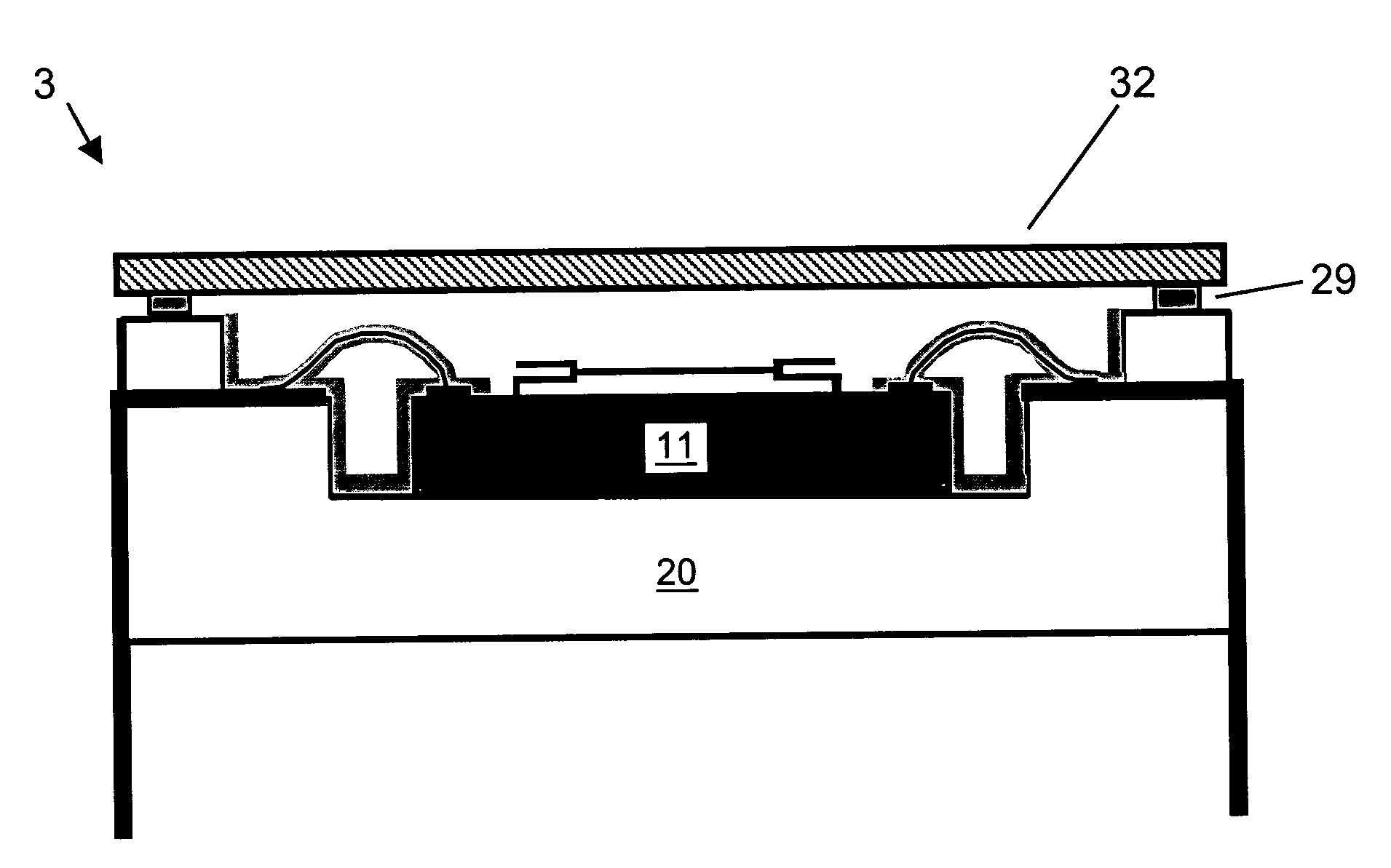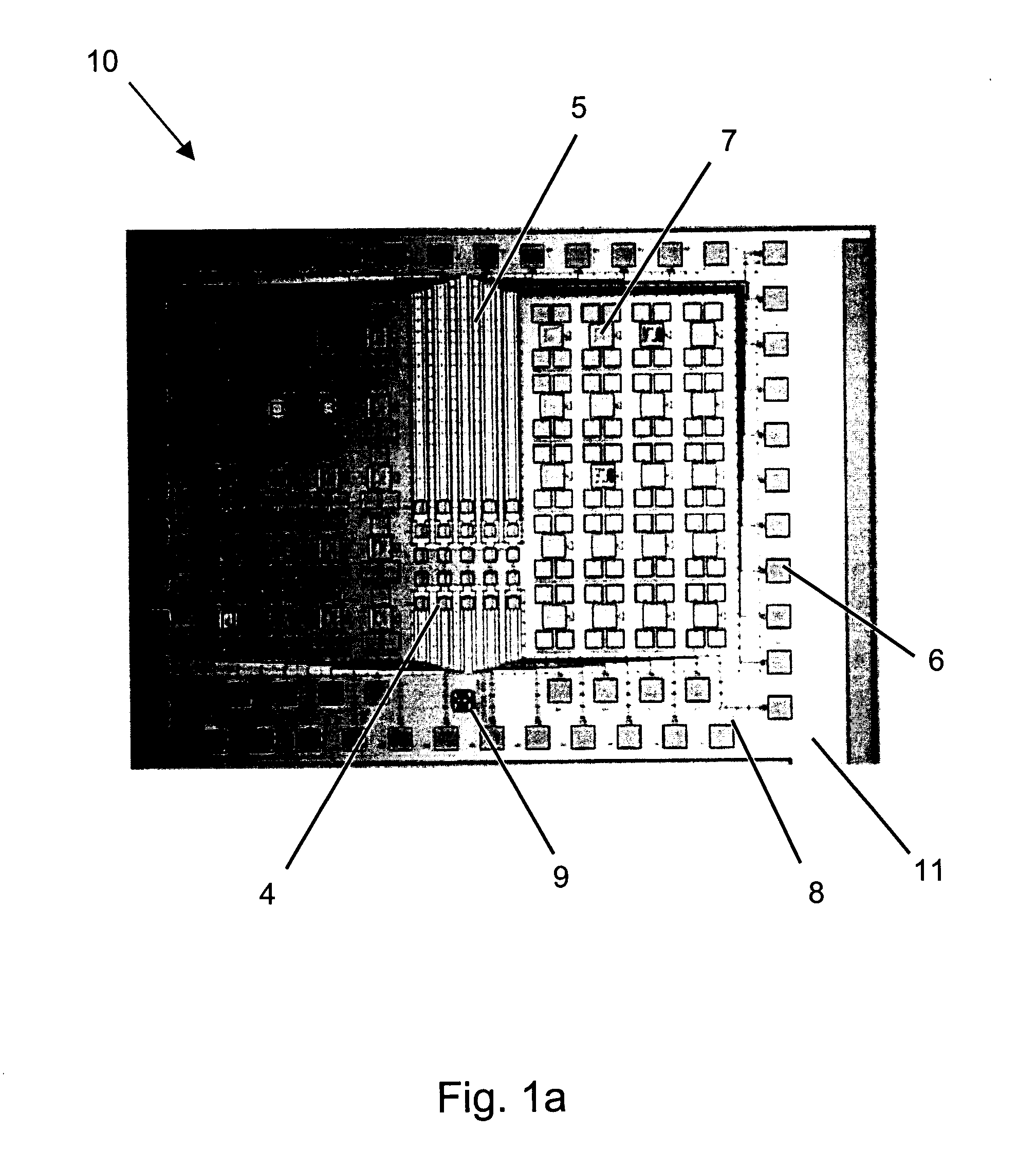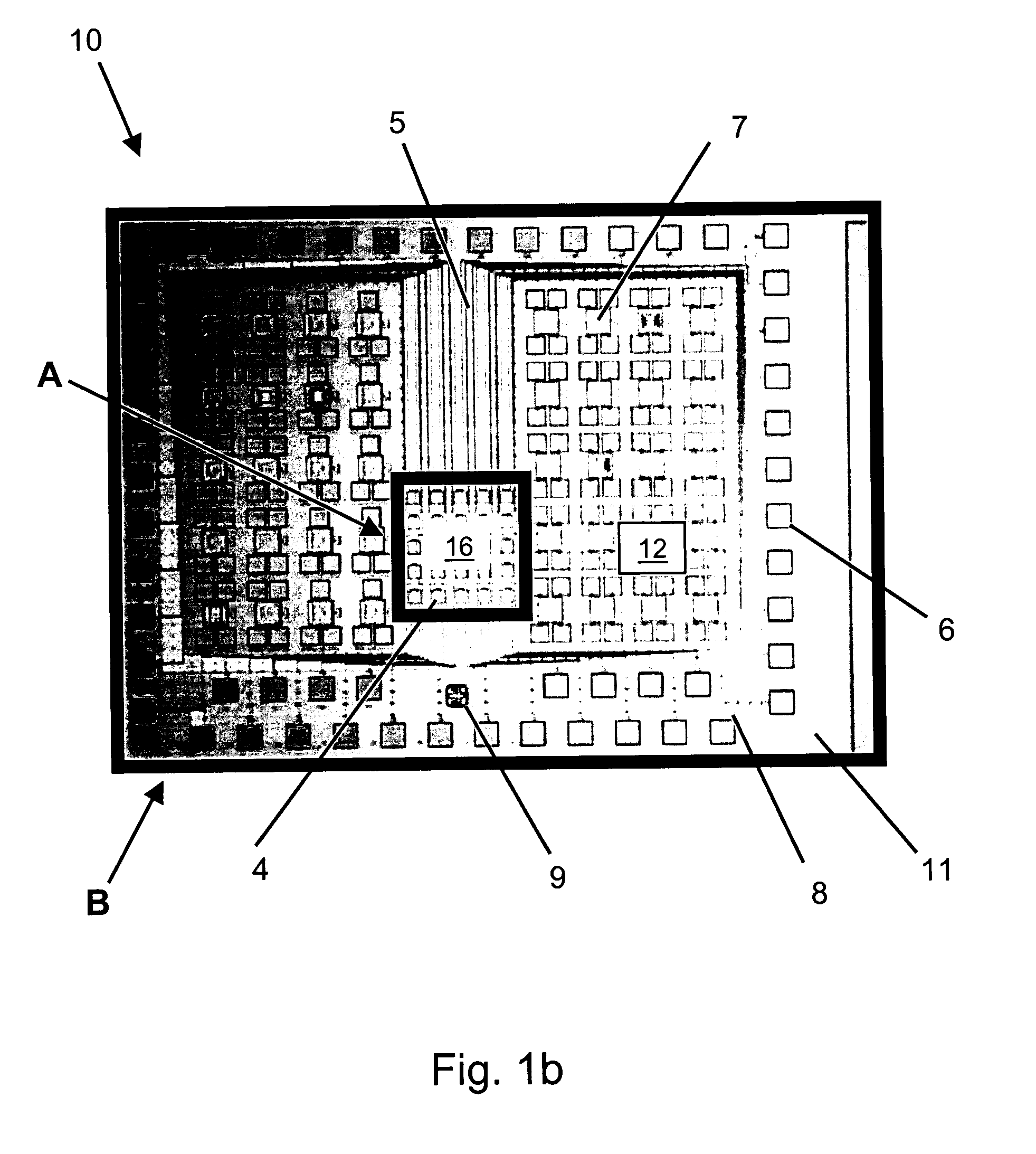Encapsulants for protecting MEMS devices during post-packaging release etch
- Summary
- Abstract
- Description
- Claims
- Application Information
AI Technical Summary
Benefits of technology
Problems solved by technology
Method used
Image
Examples
Embodiment Construction
[0045]The present invention relates to methods to protect a MEMS or microsensor device through one or more release or activation steps in a “package first, release later” manufacturing scheme. This method of fabrication permits wirebonds, other interconnects, packaging materials, lines, bond pads, and other structures on the die to be protected from physical, chemical, or electrical damage during the release etch(es) or other packaging steps. Metallic structures (e.g., gold, aluminum, copper) on the device are also protected from galvanic attack because they are protected from contact with HF or HCL acid etch solutions.
Definitions
[0046]Herein, the word “wafer” is defined to include not only silicon, but also germanium, gallium arsenide (GaAs), other semiconducting materials, and also quartz wafers or substrates (e.g., for MEMS structures), and silicon on insulator (SOI). Substrates such as alumina, LTCC, HTCC, and polymer are also included. Use of the word “MEMS” is intended to also...
PUM
| Property | Measurement | Unit |
|---|---|---|
| Length | aaaaa | aaaaa |
| Thickness | aaaaa | aaaaa |
| Electrical conductivity | aaaaa | aaaaa |
Abstract
Description
Claims
Application Information
 Login to View More
Login to View More - R&D
- Intellectual Property
- Life Sciences
- Materials
- Tech Scout
- Unparalleled Data Quality
- Higher Quality Content
- 60% Fewer Hallucinations
Browse by: Latest US Patents, China's latest patents, Technical Efficacy Thesaurus, Application Domain, Technology Topic, Popular Technical Reports.
© 2025 PatSnap. All rights reserved.Legal|Privacy policy|Modern Slavery Act Transparency Statement|Sitemap|About US| Contact US: help@patsnap.com



